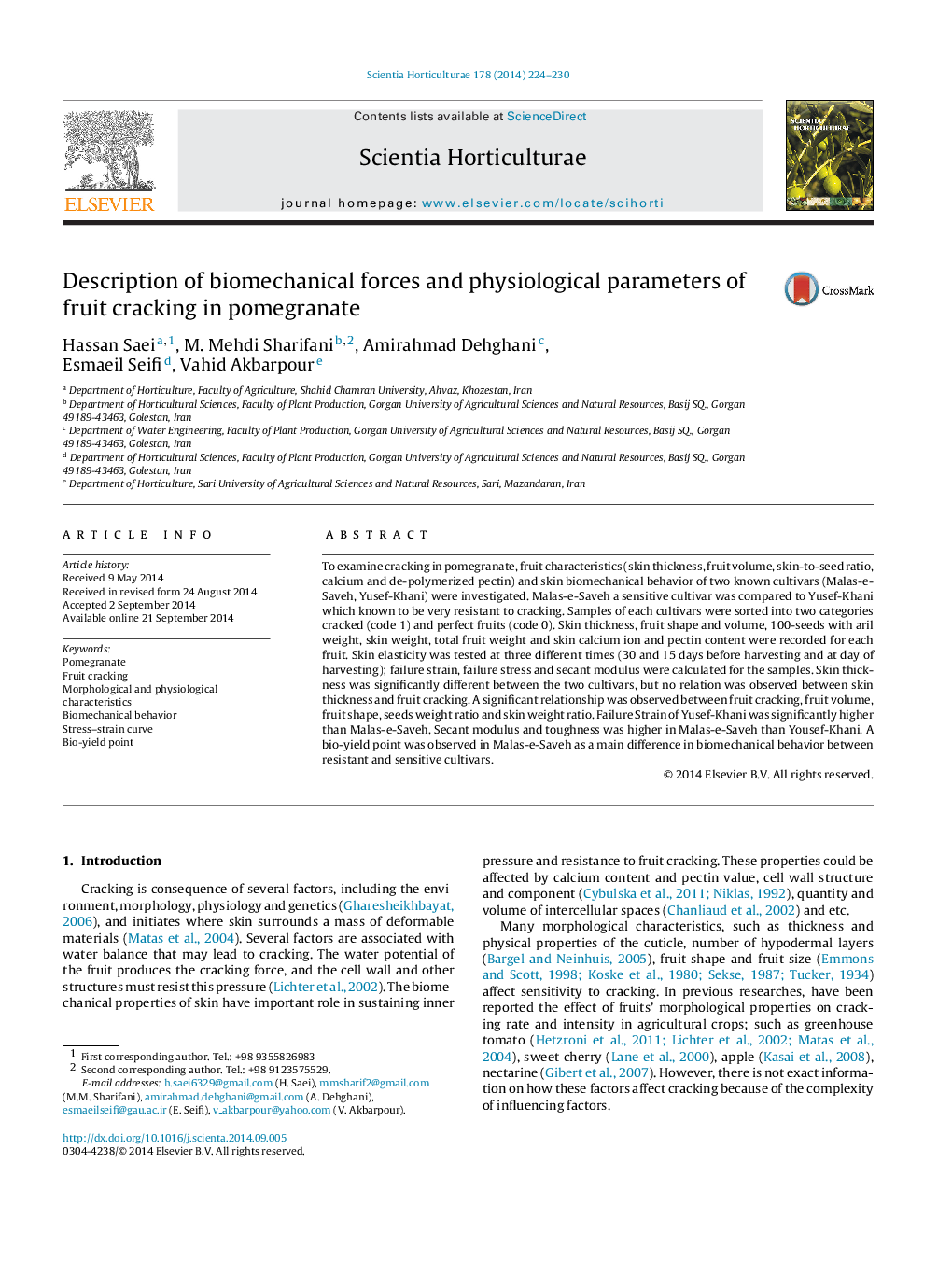| کد مقاله | کد نشریه | سال انتشار | مقاله انگلیسی | نسخه تمام متن |
|---|---|---|---|---|
| 4566582 | 1628820 | 2014 | 7 صفحه PDF | دانلود رایگان |
• Fruit characteristics effecting on cracking and skin biomechanical behavior were investigated.
• Fruit cracking increase with increasing fruit volume, aril numbers and fruit shape deviation.
• During ripening, biomechanical behavior changed significantly between the two cultivars.
• ɛmax in Yusef-Khani was significantly higher than Malas-e-Saveh.
• A bio-yield was observed in Malas-e-Saveh.
To examine cracking in pomegranate, fruit characteristics (skin thickness, fruit volume, skin-to-seed ratio, calcium and de-polymerized pectin) and skin biomechanical behavior of two known cultivars (Malas-e-Saveh, Yusef-Khani) were investigated. Malas-e-Saveh a sensitive cultivar was compared to Yusef-Khani which known to be very resistant to cracking. Samples of each cultivars were sorted into two categories cracked (code 1) and perfect fruits (code 0). Skin thickness, fruit shape and volume, 100-seeds with aril weight, skin weight, total fruit weight and skin calcium ion and pectin content were recorded for each fruit. Skin elasticity was tested at three different times (30 and 15 days before harvesting and at day of harvesting); failure strain, failure stress and secant modulus were calculated for the samples. Skin thickness was significantly different between the two cultivars, but no relation was observed between skin thickness and fruit cracking. A significant relationship was observed between fruit cracking, fruit volume, fruit shape, seeds weight ratio and skin weight ratio. Failure Strain of Yusef-Khani was significantly higher than Malas-e-Saveh. Secant modulus and toughness was higher in Malas-e-Saveh than Yousef-Khani. A bio-yield point was observed in Malas-e-Saveh as a main difference in biomechanical behavior between resistant and sensitive cultivars.
Figure optionsDownload as PowerPoint slide
Journal: Scientia Horticulturae - Volume 178, 23 October 2014, Pages 224–230
